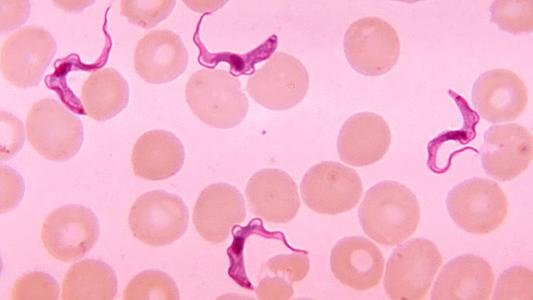Major depressive disorder is one of the most common mental disorders in the U.S., affecting more than 8% of adults. If you’re lucky, the usual antidepressants take about a month before you show any signs of improvement — assuming you’ve found the right one. For some people, antidepressants don’t work at all. Therefore, scientists are constantly looking for new strategies to treat depression, ideally, a drug that is fast-acting and with fewer side effects. Now, according to a recent study in mice, scientists have identified an antidepressant compound that works differently than any other on the market and takes effect in as little as two hours.
Current treatments for depression
In the 1950s, scientists accidentally discovered antidepressants while developing iproniazid, a treatment for tuberculosis. During clinical trials, patients overwhelmingly reported pleasant side effects, including euphoria, psychostimulation, and improved sleep. Subsequent studies revealed that iproniazid increased a group of neurotransmitters: serotonin, dopamine, epinephrine, and norepinephrine. For the next several decades, experts thought that low levels of these neurotransmitters must cause depression. By the 1990s, it became clear that this wasn’t entirely correct, but that didn’t stop pharmaceutical companies from promoting drugs that increase neurotransmitter levels.
The most commonly prescribed type of antidepressant is selective serotonin reuptake inhibitors (SSRIs), which include Prozac, Zoloft, and Paxil. These drugs prevent neurons from removing serotonin by blocking a transporter protein, allowing more of the neurotransmitter to interact with neurons for longer. This effect occurs almost immediately; however, the neuropsychological effects of SSRIs take about a month to develop. This is because more serotonin isn’t always better.
The dorsal raphe nucleus (DRN) is the brain’s primary source of serotonin. Like neurons in many brain regions, the neurons in the DRN communicate through serotonin. However, the consequence of this communication is opposite to that of other brain regions. Serotonin represses the firing of DRN neurons, whereas it activates neuronal firing in other parts of the brain. Furthermore, because the DRN is such an essential producer of serotonin, serotonin signaling is reduced throughout the brain when the DRN stops firing. In other words, too much serotonin in the DRN can worsen depression symptoms. So, why are SSRIs the most commonly prescribed treatment for depression? If DRN neurons are bombarded with serotonin for a long time (about a month), they become desensitized to the repressive effects of the neurotransmitter and return to normal. Essentially, higher levels of serotonin in the brain make a person feel better, and they no longer interfere with DRN activity.
A more targeted approach
A team of scientists at Nanjing Medical University wanted to try a different approach. Instead of broadly inhibiting all serotonin transporters (which is what SSRIs do to increase serotonin levels), what if they could specifically activate DRN serotonin transporters (which would allow the DRN neurons to mop up the serotonin, reducing its level and allowing the DRN neurons to function normally)? If they could do this, the antidepressant effects would be evident in hours. Unfortunately, the serotonin transporters in the DRN are identical to serotonin transporters in other regions of the brain. Therefore, any molecule that directly activated one would activate the others.
Luckily, a 2008 study provided a clue. The study found that the serotonin transporter binds to nitric oxide synthase (nNOS), a protein primarily found in DRN neurons but not other depression-associated brain regions. When the transporter and nNOS combine, the transporter stops functioning. Blocking this interaction (and allowing the transporter to work) would be an excellent way to decrease serotonin in the DRN, but first, the researchers needed to determine if DRN neurons expressed nNOS during the depression episode. To do this, they required clinically depressed mice.
Decreasing serotonin in the DNS increases it in other regions
The chronic unpredictable mild stress (CMS) protocol is a common way to induce depression in rodents. Scientists exposed the animals to random mild stressors, including restraint in tubes, forced swimming in cold water, water deprivation, and pairing with another stressed animal. After four weeks, the mice, unsurprisingly, exhibited behavioral and neurological changes associated with depression. Most importantly, nNOS was significantly increased in the DRN but not in other brain regions. So the big question became, “Does blocking nNOS alleviate depression?”
In order to answer this, the researchers injected a chemical directly into the mice’s DRN to break the serotonin transporter and nNOS apart. Within two hours, they saw serotonin transporter activity increase (which means the serotonin level in the DRN decreased). More importantly, increased serotonin in the other regions of the brain led to improved behavior, suggesting that blocking the transporter-nNOS complex had a fast-acting antidepressant effect.
Unsurprisingly, most people don’t want an injection into their brains. So, the researchers developed a molecule that could be injected through a vein. Once again, they administered it to a group of depressed mice, and once again, depressive behaviors were reversed within two hours of administration. The authors urge for human trials to determine if blocking the transporter-nNOS complex also works to alleviate depression in humans.
This article was reprinted with permission of Big Think, where it was originally published.





